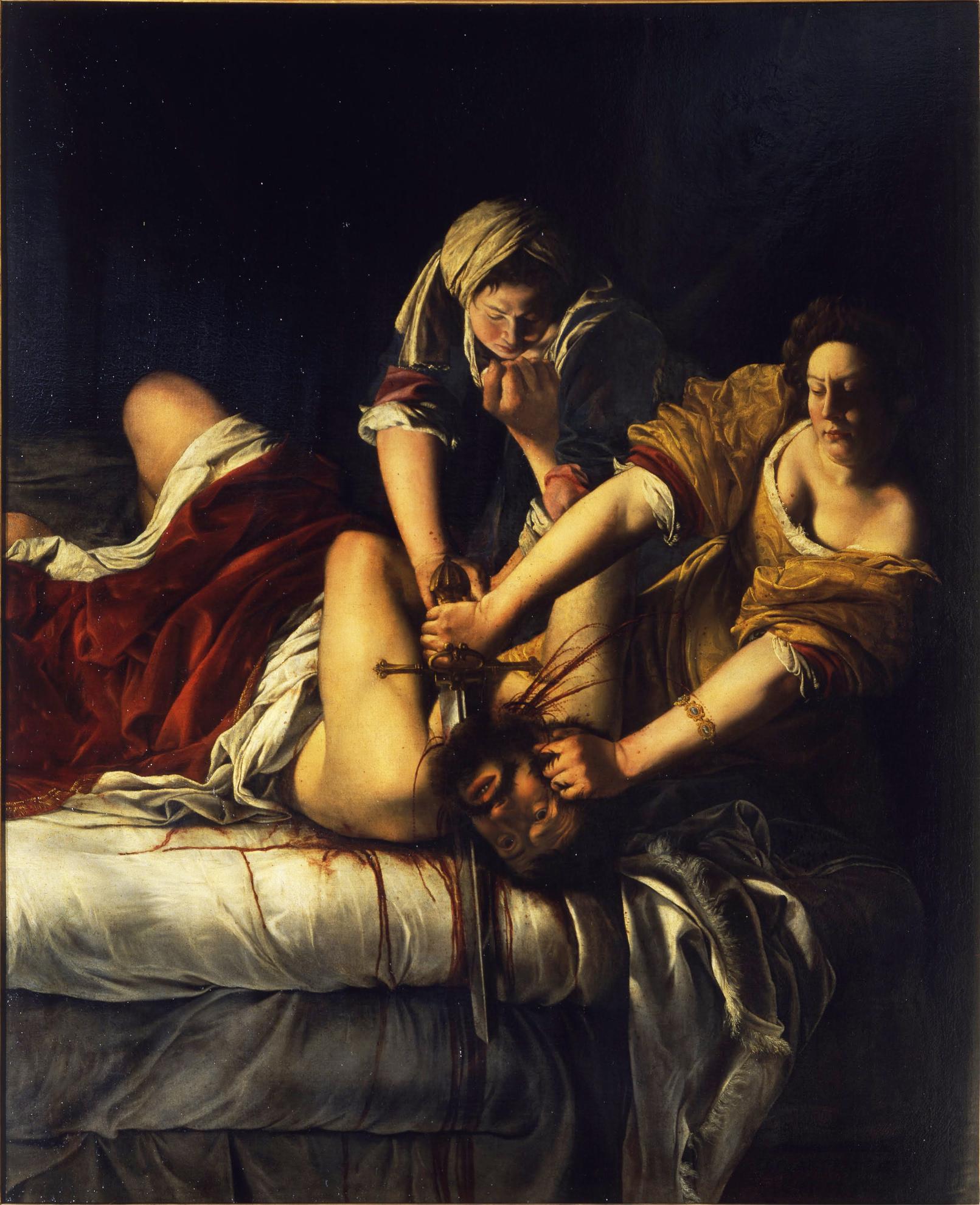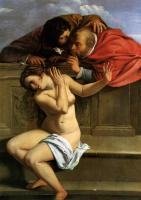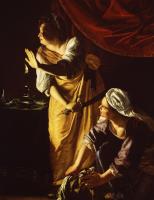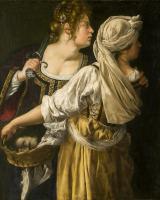Artemisia Gentileschi
Artemisia Gentileschi’s early education consisted entirely of painting; in fact she couldn’t read or write until she was an adult. She studied initially with her painter father and in this way she met Caravaggio, whose chiaroscuro style impressed her so much that she was drawn to Baroque drama and expressiveness. She was her own model for her first version of Susannah and the Elders, painted when she was only seventeen.
But at nineteen, Gentileschi was raped by her tutor Agostino Tassi. Her father sued, and there followed a seven-month trial, during which Gentileschi was accused of being promiscuous, subjected to intimate examination, and then tortured with thumbscrews while giving evidence. Tassi was imprisoned for just one year.
 After this humiliation, Gentileschi married another painter, Pierantonio
Stiattesi, and the pair moved to Florence. They both worked at the Academy of
Art and Design, where Gentileschi became the first official woman member,
supported by her patron, Cosimo II de’ Medici.
After this humiliation, Gentileschi married another painter, Pierantonio
Stiattesi, and the pair moved to Florence. They both worked at the Academy of
Art and Design, where Gentileschi became the first official woman member,
supported by her patron, Cosimo II de’ Medici.
Gentileschi was hailed as a genius and yet frequently decried, because she possessed a creative talent believed to be exclusively male. Fortunately, this did not stop her producing works of key importance and even gaining patronage from Charles I of England. Recent scholarship has declared that Gentileschi was not merely “a good woman painter”, but one of the major visual thinkers of her era.
Judith and Holofernes illustrates the decapitation of the Assyrian oppressor Holofernes by the Jewish heroine Judith. This is a powerful expression of the artist’s own emotional turmoil. The realism and dramatic chiaroscuro easily match Caravaggio or Rubens.
Gentileschi painted five other versions; it was a theme that particularly appealed to the Florentines who were often threatened by the more powerful states. For the artist, it was an affirmation of the strength of women in all kinds of adversity.




